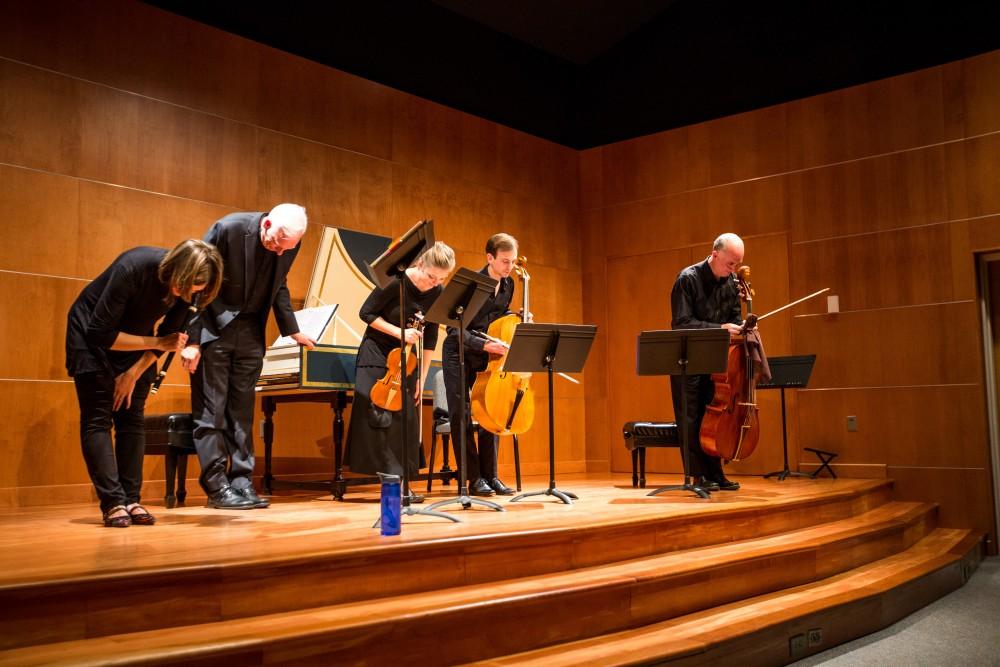GVSU ensemble performs Baroque music with period instruments

Dec 4, 2017
The audience waited with bated breath to enjoy a flashback to the 18th century in the Sherman Van Solkema Recital Hall of the Haas Center for Performing Arts on Saturday, Dec. 2. The hour-long recital was performed by the Early Music Ensemble, a Grand Valley State University chamber group that performs pre-classical repertoire.
The Early Music Ensemble was started in the fall of 2003 by associate professor Pablo Mahave-Veglia not long after he joined the GVSU faculty.
“When I read the job description, it fit me like a glove,” Mahave-Veglia said. “Then, I loved the campus and everything else about it, so I never left. It seemed we were kindred spirits.”
Mahave-Veglia thinks music can be a tool to better understand the past.
“A lot of people tell me they find history too dry, so here is something you can attach it to,” he said. “During this period, people had the time and sensory experience to engage in this kind of expression of just sound, which we don’t have. We like music with videos, words, which is good and valid, but we don’t give space for the sensory.”
Study of early music also allows students a greater understanding of practice.
“It’s a more vivid picture of music we have all learned and played, whether or not we always play it on period instruments,” said Kevin Flynn, a former GVSU student who returned to perform in the recital. “I’ve gained a much more nuanced appreciation of what was actually going on and why notes fit together the way they do.”
Adding another layer to this understanding, the Early Music Ensemble uses period instruments and replicas to perform.
“We also play on instruments that are not our own, reproductions of instruments that would have been used by the people who wrote the music,” Flynn said. “If you spend a good portion of your time getting used to using something other (than your) main instrument, you benefit from that.”
Flynn believes students also benefit from working in the smaller groups that the ensemble entails.
“With an orchestra, there’s so many people and it’s hard enough to just play together,” he said. “What I really enjoyed was making music with two or three other people and learning to shape it in a way that (fits) us best.
“There’s also a lot of direct feedback from other people, from Pablo as the coach. … You get much more individualized and real musical training.”
The experience is also rewarding for the leaders of the group.
“What I enjoy most is having that experience of showing them where the rubber meets the road,” Mahave-Veglia said. “All the students are music students, so they know about the tonal language of Baroque, but it’s sometimes hard to find a real meaning. This is not a theory or history class, but it’s a practice class where it all gets glued to the practice of playing Baroque music.”
This was made clear in the performance, where each musician clearly executed their roles in a variety of small ensembles. Music from Antonio Vivaldi, Georg Philipp Telemann and other composers was played, and each piece had a unique mood.
Learning how to add style and meaning to a performance has also been a highlight of working in the ensemble.
“The idea of playing a piece of music so that you are trying to say something and embody a feeling,” Flynn said. “Everyone in music tries to do that more or less, but I gained better tools (to) do so and better thought processes, feeling it for myself and trying to project that. I learned that I had to carefully craft how a feeling sounded.”

























